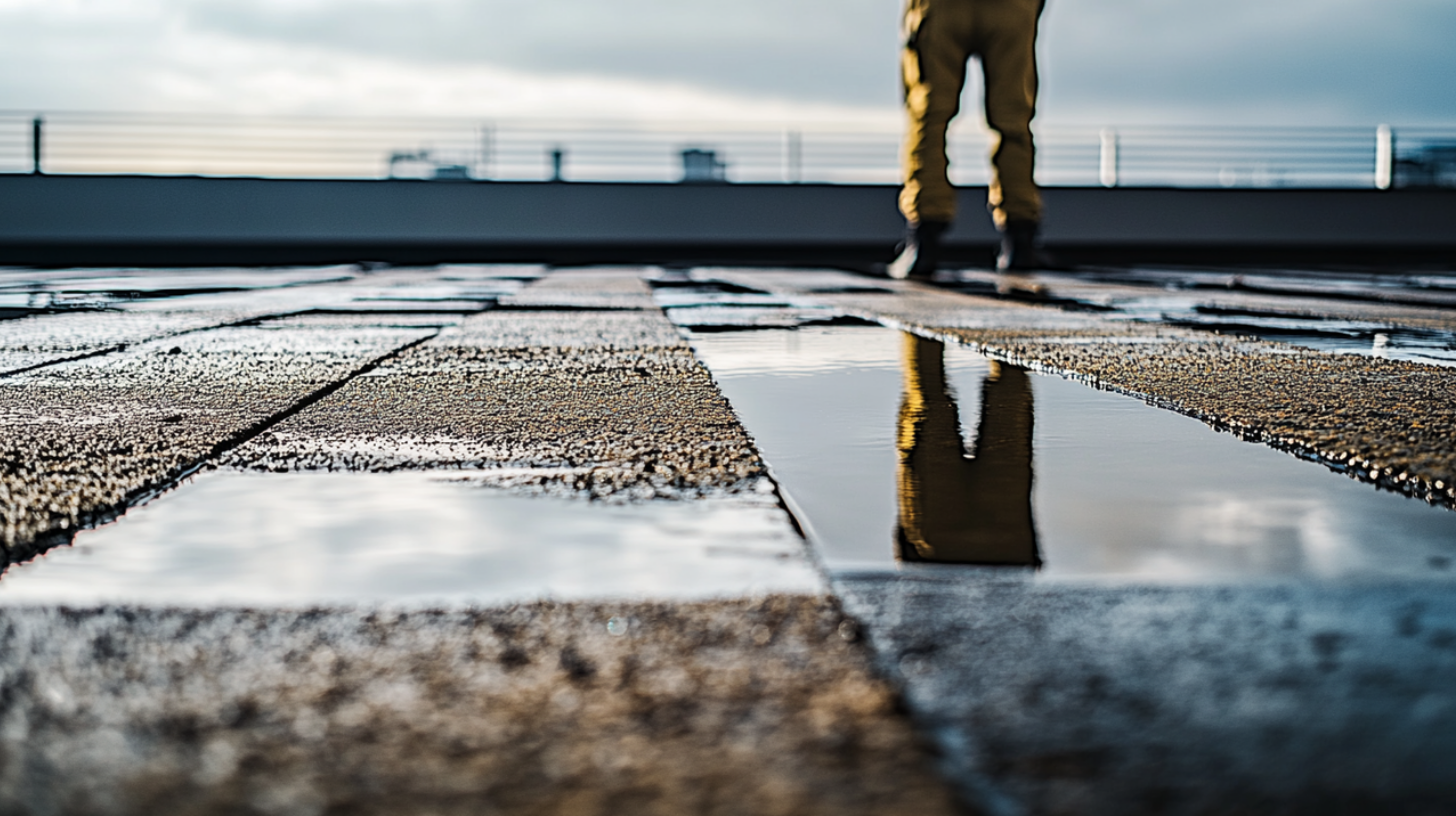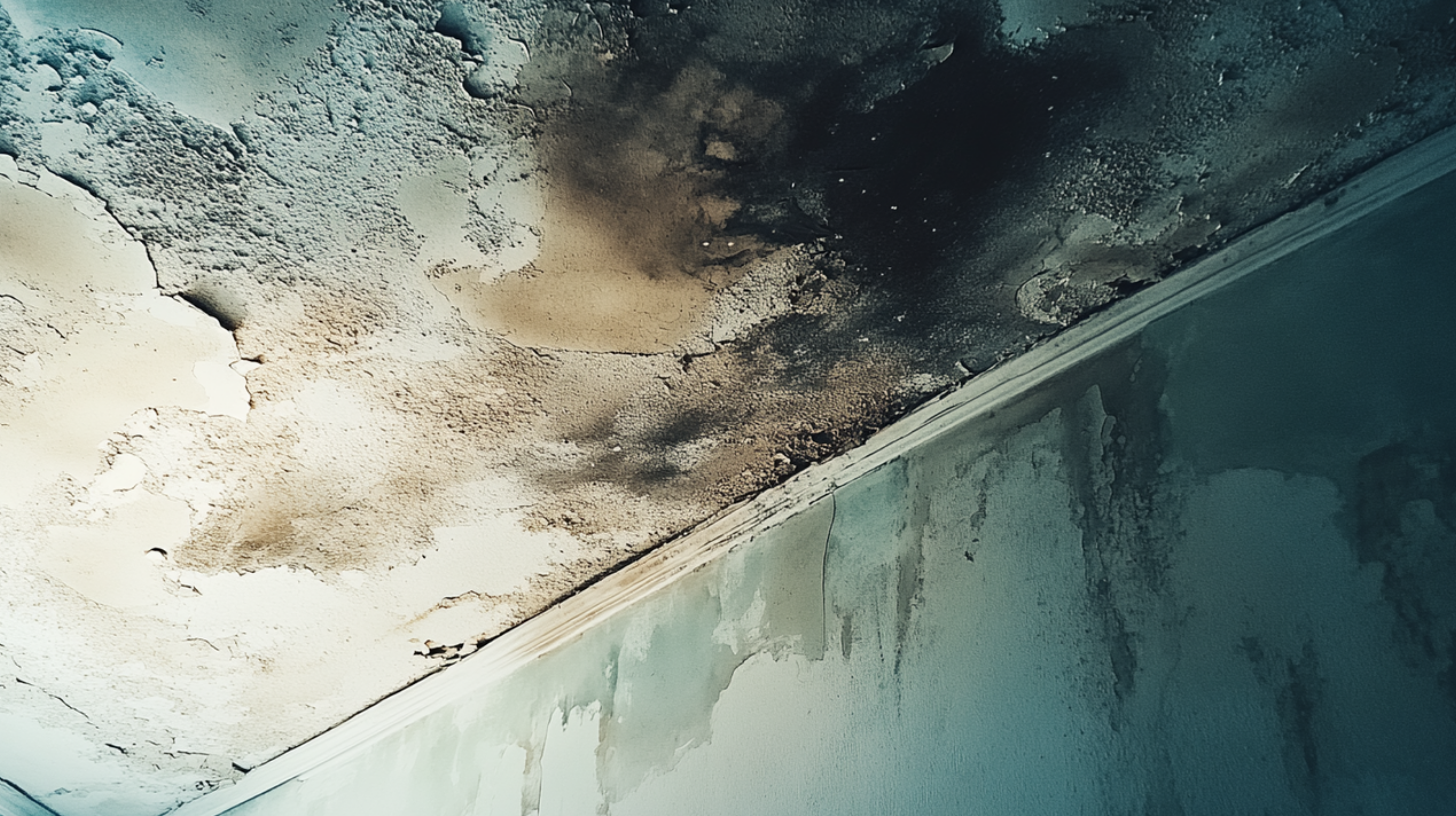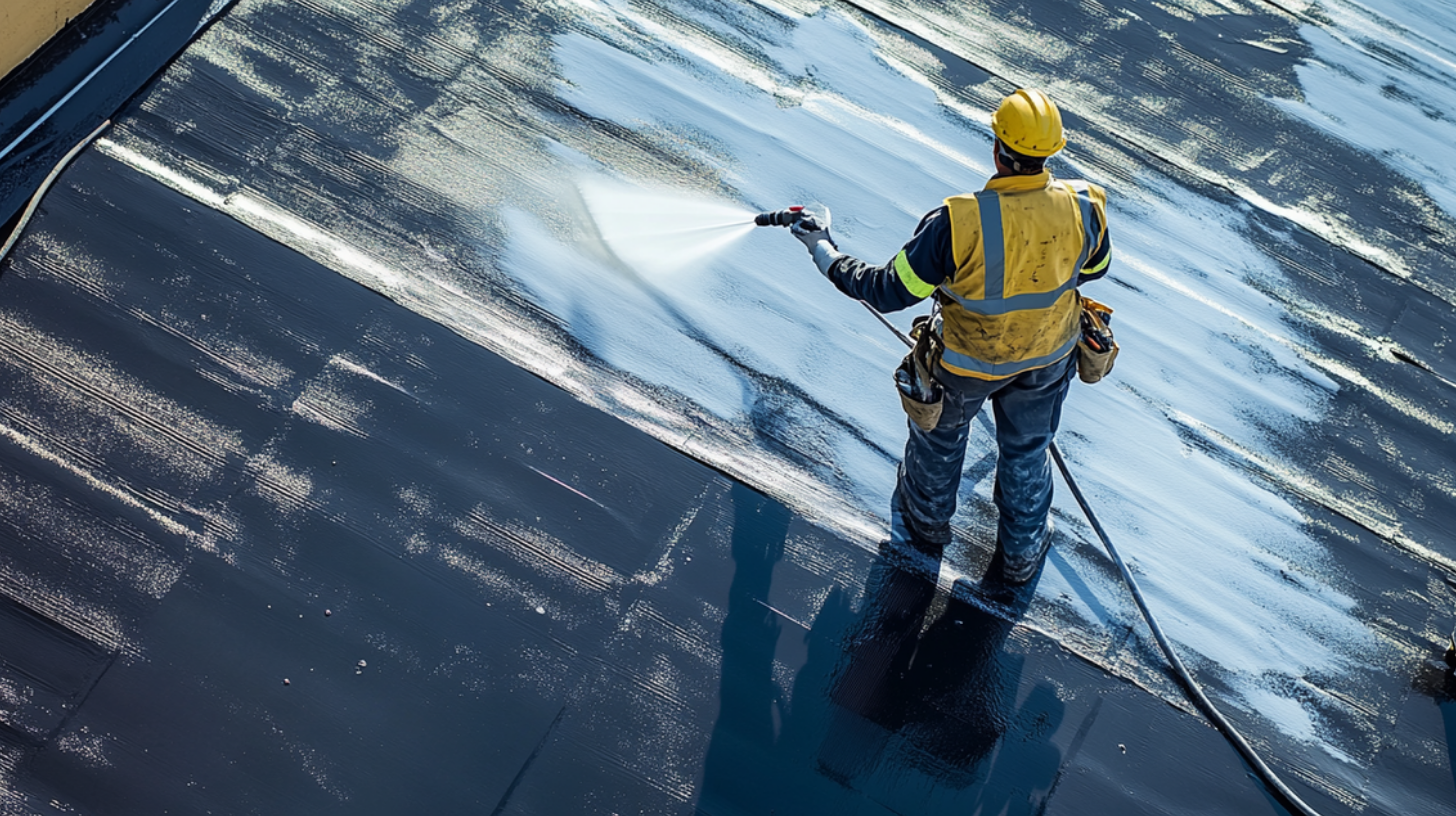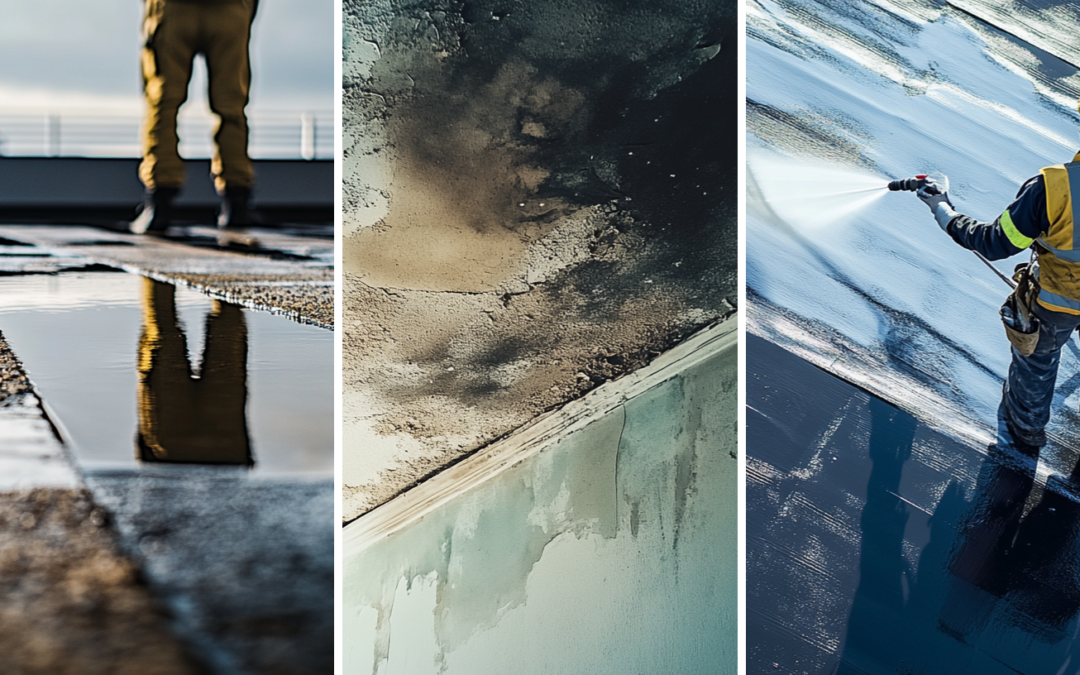Understanding Ponding Water on Roofs

Ponding Water - Causes of Ponding Water on Roofs - Sky Roofing Construction & Remodeling
Causes of Ponding Water on Roofs
Identifying the causes of ponding water is crucial for effective maintenance. An improperly sloped roof can hinder water drainage, causing it to collect in low spots, while clogged drains and gutters can obstruct water flow, leading to pooling. Additionally, roof deterioration from general wear and tear or severe weather can create depressions that trap water. By addressing these symptoms and underlying causes, property owners can protect their roofs, extend their lifespan, and ensure the interior remains safe and dry.
Improper Roof Slope
Common installation mistakes or design flaws can exacerbate this problem, resulting in inadequate roof slope that hinders proper drainage. To mitigate these risks, it’s essential to maintain a minimum slope of 1/4 inch per foot, while a pitch of 1/2 inch per foot is recommended for commercial roofs to enhance drainage efficiency.
Proper roof slope ensures that water flows toward designated drains, reducing the risk of water accumulation and improving the effectiveness of insulation. Achieving positive roof drainage preserves the roof’s lifespan and helps protect the underlying structures from the damaging effects of ponding water.
Clogged Drains and Gutters
Regularly unclogging drains and gutters is essential to prevent water ponding, as blocked systems only exacerbate water buildup. Proper drainage is critical, particularly on flat roofs; inadequate drainage can result in ongoing issues, including structural damage.
Local building codes typically regulate drainage requirements, specifying a maximum area of 10,000 square feet per drain and outlining proper spacing to ensure effective water management. Awareness and adherence to these codes, along with diligent maintenance of drains and gutters, can help mitigate the risks associated with water ponding and ensure the longevity of your roofing system.
Roof Deterioration
Structural settling can exacerbate this problem, as it may cause the roof surface to develop cracks, depressions, and warping, further hindering proper drainage. These imperfections diminish the roof’s aesthetic appeal and increase the risk of leaks and structural damage.
Understanding the relationship between roof deterioration and ponding water is essential for property owners seeking to maintain the integrity of their roofs and prevent costly repairs down the line.

Ponding Water - Potential Damage Caused - Sky Roofing Construction & Remodeling
Potential Damage Caused by Ponding Water
Additionally, water can seep into the underlying layers, accelerating material degradation and increasing the risk of leaks. This unchecked ponding seriously threatens the roof’s integrity, potentially resulting in structural weakening and partial roof collapse or costly repairs.
Furthermore, stagnant water fosters the growth of algae, mold, and mildew, creating health risks and structural issues inside the building. This scenario not only impacts indoor air quality but can also allow harmful organisms to infiltrate the home. Addressing ponding promptly is crucial; if water remains stagnant for more than 48 hours, the potential for extensive damage and health risks escalates significantly.

Ponding Water - Roof Repair Solutions - Sky Roofing Construction & Remodeling
Roof Repair Solutions for Ponding Water
Timely roof repair solutions prevent the detrimental effects of ponding water and offer opportunities to improve overall roof performance and drainage. By recognizing the factors contributing to ponding and implementing effective repair strategies, homeowners and building managers can protect their investments while promoting the health of their roofing systems. Exploring various solutions can lead to a more resilient roof that withstands the elements and continues to provide shelter and safety.
Re-sloping the Roof
Improving Roof Drainage Systems
Additionally, creating a positive drainage slope is essential to ensure that water flows effortlessly toward these drains, helping to mitigate the risk of ponding water. Incorporating parapet wall scuppers can serve as an effective alternative drainage solution while meeting necessary sizing requirements for structures with parapet walls.
Roof Coatings and Waterproofing
However, it’s important to recognize the potential harm ponding water can inflict on a roof’s coating, especially in hot climates, where prolonged exposure can cause leaks and accelerate deterioration. Addressing standing water promptly is crucial to maintaining the integrity of your roof and preventing costly repairs down the line.
How to Prevent Ponding Water in the Future
Routine inspections are essential for ensuring the roof remains in good condition. During these inspections, check for blockages or debris in gutters, drains, and roof surfaces that could obstruct water flow. Upgrading to more efficient roof designs, like tapered insulation or sloped configurations, can improve drainage and significantly reduce the risk of ponding.
Consulting a professional roofing contractor is also important, as their expertise helps identify potential problems early and implement effective solutions before they become major concerns. Seeking expert advice can further enhance the effectiveness of these measures.
Don’t Let Ponding Water Compromise Your Roof
Addressing ponding water is crucial for maintaining the health and integrity of your roof. Proactive measures, such as regular inspections and timely repairs, can prevent costly damage and ensure your home remains safe and dry. If you suspect ponding water is affecting your roof, contact Sky Roofing Construction & Remodeling (skyroofingconstructiontx.com) to schedule a roofing consultation. Call us today at (210) 942-9797 to safeguard your investment and home.
Willis Vachon is a seasoned contributing writer for Sky Roofing Construction & Remodeling, specializing in the technical and safety aspects of roofing construction. With a keen eye for detail and a passion for ensuring quality and safety in every project, Willis provides valuable insights that help both professionals and homeowners make informed decisions about their roofing needs.

